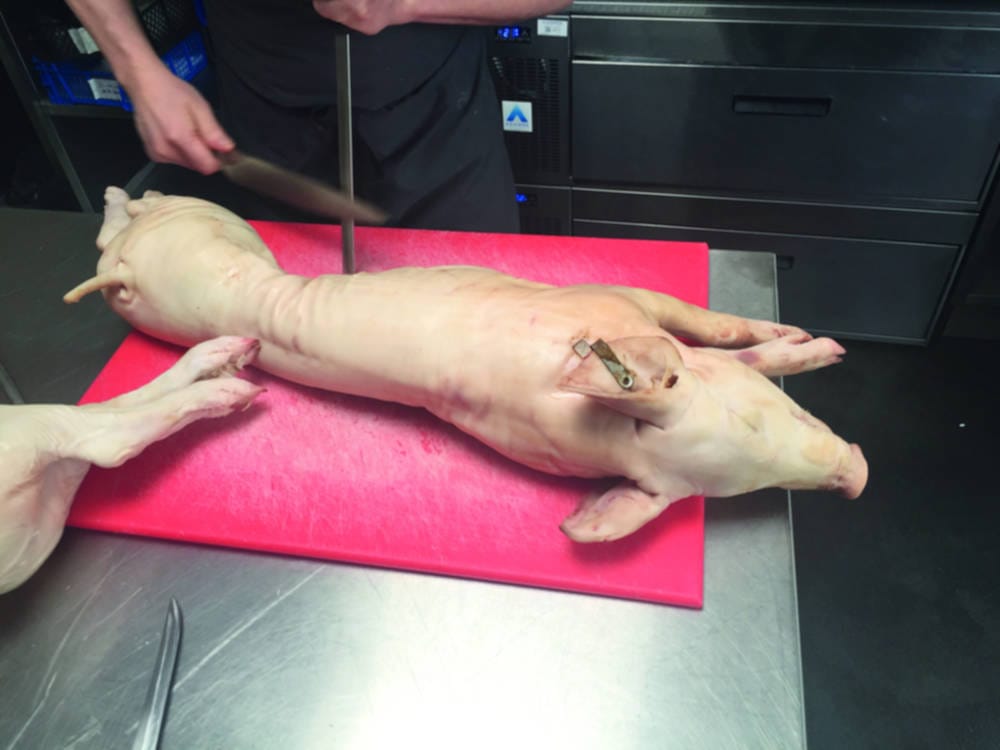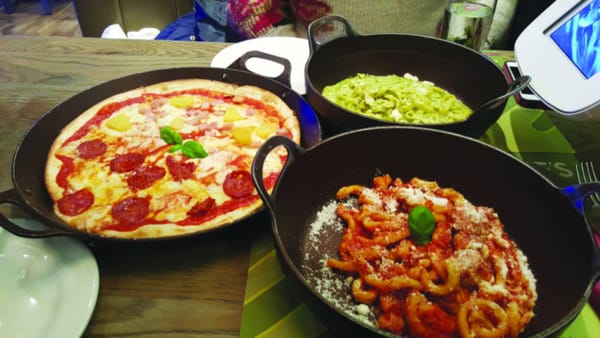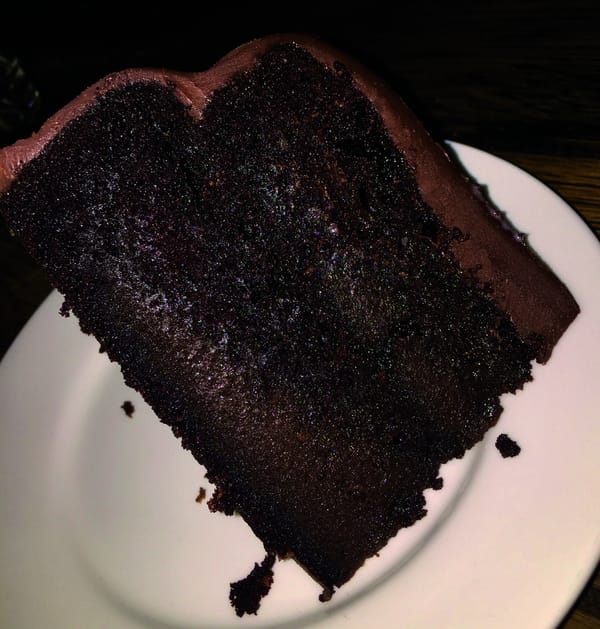Live and let live, as long as you’re not tasty
FELIX explores the way in which meat-eaters eat, and some misteaks they make in their thinking

Morals are tricky things to have. I try, like I’m sure most of you do, but there are grey areas for me. Food can contain many of them. Like all transcendental ideas, it is sometimes easiest to simply pick and choose them as you like, but when they tie in to the very substance we consume every day (out of pleasure or necessity – but that’s another thing entirely), I try to adopt a more rigid line: I will eat anything, as long as no unnecessary suffering was caused to provide it.
I can already hear the carrots being sharpened as the dozens of vegans from around Imperial launch to brand me an abuser of my stewardship of the planet, a bastard, or even worse a sadistic animal slaughterer. But relax! This isn’t aimed at you – it’s addressed to all those who eat meat, be it fish or flesh, and do not have the stomach (heh) to participate in, or worse acknowledge, the production of so much of what we eat. So vegans, vegetarians, relax – you’ve made your choice, I’m just trying to get others to think about theirs.
Some people have called me cruel, in the past, for harvesting animals – rabbit, mackerel, pigeon etc – where I could simply walk into Tesco’s and buy some from the shelf. Apparently, doing the deed myself makes it somehow worse. I’ve been called a butcher, or worse a murderer. Poor old Flopsy – but I got to do it myself, as opposed to passing the responsibility (and thus the ‘guilt’) to an abattoir worker who slices through thousands of necks a day with no compunction whatsoever. I had to make the choice myself, when I pulled the trigger or broke the neck. Why should you feel better for passing that on to someone else, and then enjoying the end result nonetheless! Besides, as barmy as it can sound, you experience a great attachment to any creature when you take its life – something quite spiritual, as it’s a great honour to be able to.
Still, I can understand people’s reservations, as we didn’t all grow up surrounded by life and death, other than the family pets. I certainly didn’t. Born to a family in the suburbs, we stayed there. When we did make trips to the coast for holidays, fishing was seen as a pleasant (or not) way to read a book, with little intent to actually catch anything, let alone have to kill it. My father, raised as a (semi-)devout Hindu, still struggles to kill fish to this day – and I admire that he sticks to his morals. Somehow, my parents passed on none of that to me – I will happily end the brief suffering of a hooked fish or a downed bird, as long as I can feel safe in saying that the most will be made from it. For example, I would never kill a non-edible species without a very good cause, as what’s in it for me?
If you’re not going to kill the beast, you should at least appreciate what it is. This is an issue that has been focused on by so many – that people are disconnected between pigs in a pen, and pork in a packet. This, for me, is the most woeful dishonesty to yourself. If you’re going to consume meat, you need to accept where it came from – a real, living, breathing animal that was killed and butchered. The conditions animals are raised and are slaughtered in can vary massively, but I think that’s an article for next week.
So please, the next time you wax on about how cruel or savage hunters are, just remember – if you want to eat meat, an animal will have to die.* Why not just do it yourself?
*obviously, this ignores lab-grown meat. I suggest you ignore lab-grown meat too.
Rabbit (or chicken) cacciatore
Whilst perfect for the rabbit that is now gracing spring shelves, this is equally as tasty with chicken – but only use legs, as breast meat won’t stand up to the slow braising. Rabbit is available at many good butchers in London for a lot cheaper than chicken, so it’s a good way to try a new, tasty meat without breaking the bank – especially as it’s the right time of the year to have it! And don’t be afraid of the anchovies – they add an unctuous background to the sauce. Serve with crusty bread to sop up the juices, a simple salad and the rest of the bottle of wine.
1 rabbit, skinned, drawn and jointed – get the butcher to do this for you if you don’t want to follow one of the many brilliant guides available online.
(or use 3-4 chicken legs, skin on)
Coarse salt
50ml olive oil
200g smoked lardons
3 anchovies, washed to remove salt and finely minced
1 peeled white onion, halved and finely sliced
250g mushrooms, thickly sliced
1tbsp oregano
1tbsp minced thyme, dried or fresh
1 sprig fresh rosemary, leaves picked and minced very fine
1tsp smoked paprika
2tbsp tomato paste
Glass red wine
1 tin peeled plum tomatoes, diced.
20 pitted black olives
2 tbsp capers
Ground black pepper
Fine salt, to taste
Extra virgin olive oil, to finish
Sprinkle the coarse salt heavily over the rabbit/chicken, and set aside to brine – this can be done a while in advance.
Heat the oil and start frying the lardons in a large pan whilst you slice the onion and mushrooms, adding them to the pan along with the anchovies when the lardons are browned and most of their fat has rendered out. Reduce the heat, and stir regularly to dissolve the anchovies in the fat.
After about 10 minutes, increase the heat to high and get the onions and mushrooms browning and releasing all their liquid. In this time, wash the salt from the rabbit/chicken, and pat dry. Once most of the liquid has evaporated away, add a splash more oil and let it heat up, before adding the rabbit/chicken, herbs, spices and tomato puree. Get some nice colour on the meat – try and brown it on all sides - before deglazing the pan with the wine.
Simmer for a few minutes and then stir in the tomatoes (and all their liquid), the capers and the olives. Bring back to the boil then simmer, covered, for about 20-25 minutes until very tender. For some larger rabbits, it will take a bit longer – but it’s a pretty forgiving cooking method, so don’t worry too much if you leave it in for a touch long.
Remove the meat to a warm plate, and reduce the sauce till it coats the back of a spoon. Season to taste, and spoon the sauce over the beautifully tender meat.







